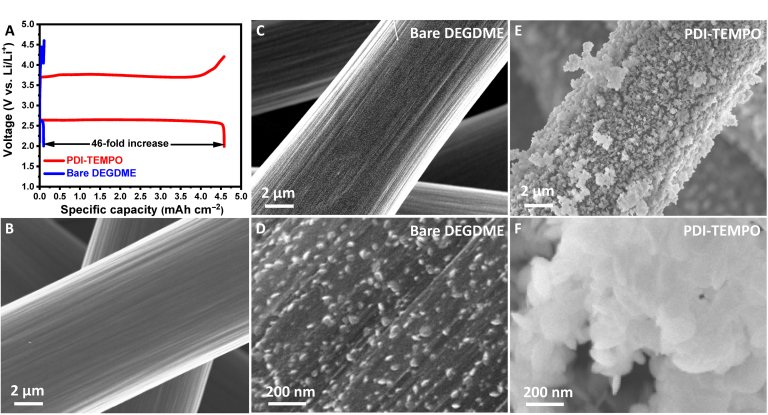 Lithium-oxygen battery
Lithium-oxygen battery
Australian researchers have announced the discovery of a new substance that gives a historic boost to long-awaited lithium-oxygen (Li-O2) batteries.
These batteries, also known as “lithium-air”, stand out for their ability to store much more energy than currently existing lithium-ion batteries. To do this, they capture atmospheric oxygen to generate a chemical reaction inside them in the discharge cycle, and release this oxygen back when recharging.
But the prototypes have suffered from parasitic reactions that hinder the release of stored energy, in addition to shortening battery life.
Jinqiang Zhang and his colleagues at the Sydney University of Technology have synthesized a molecule that solves these and other hurdles of lithium-oxygen batteries, virtually bringing them to a level that would give an electric car the same range as a combustion engine car.
The battery showed a 46-fold increase in discharge capacity, a differential between release voltage and recharge voltage of just 0.7V, and an ultra-long cycle life of over 1,400 cycles.

All-in-one substance
The substance developed by the team actually changes the fundamental working mechanism of the lithium-oxygen battery. The new quenching/mediating mechanism is based on direct chemical reactions between the new substance and the superoxide/Li2O2 radical.
“We rationally designed and successfully synthesized a multifunctional superoxide radical scavenger by grafting two active mediated redox functional groups 2,2,6,6-tetramethyl-1-piperidinyloxy (TEMPO) onto an active quenching perylene diimide (PDI) skeleton ),” detailed the team.
The result, with an extra-long name but which is well suited for the acronym PDI-TEMPO, not only chemically extinguishes the superoxide species generated during the discharge and recharge processes, but also acts as a mediator to catalyze the formation and decomposition of Li2O2 in the electrolyte solution. and decrease the potential differences between charge and discharge.
“The ability of next-generation lithium-oxygen batteries to extend the range between charges would be a significant leap forward for the electric vehicle industry. We are confident that our all-in-one molecule can dramatically improve the performance of lithium batteries.” -oxygen and enable next-generation lithium-oxygen batteries to be practical,” said Professor Guoxiu Wang, coordinator of the team.









